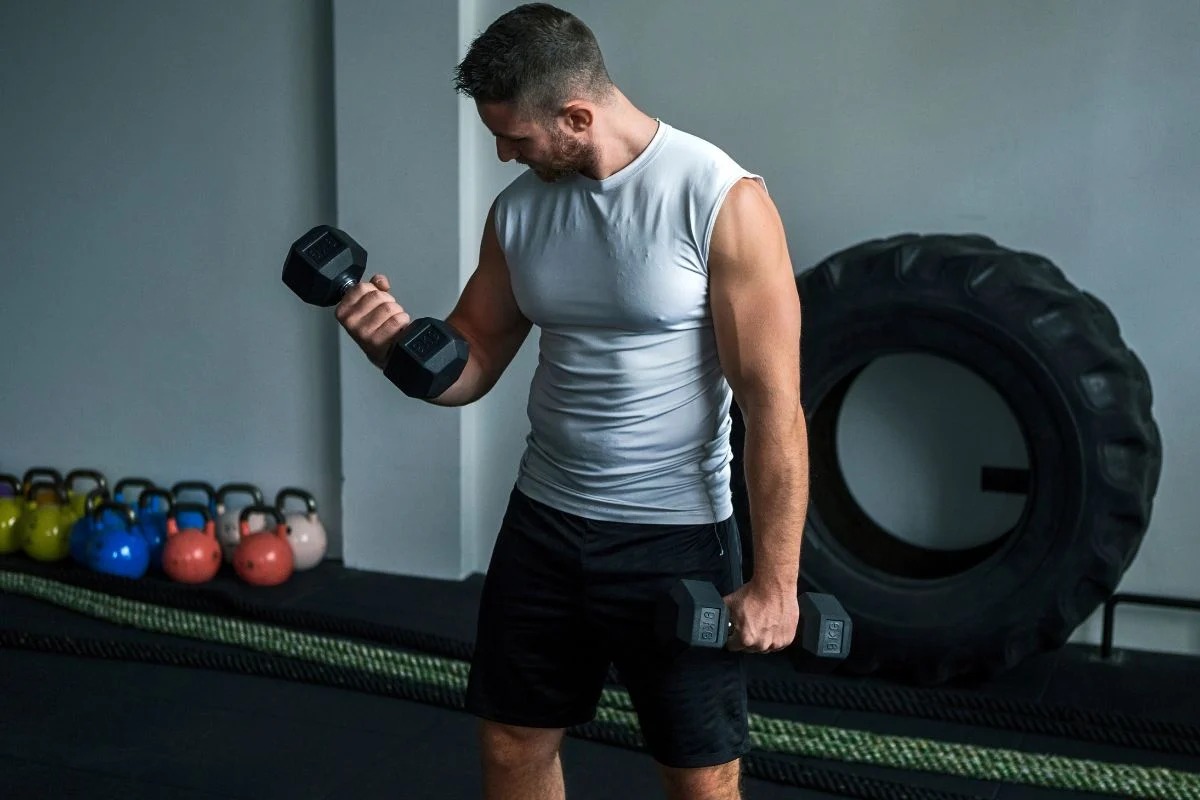The Bulgarian split squat is a staple in many lower-body routines, known for its ability to challenge your balance and build strong legs. It targets the quads, glutes, and hamstrings while engaging the core for stability. Yet for some people, this exercise feels uncomfortable, awkward, or even painful. If you’ve ever struggled to find your footing, dealt with hip strain, or simply dreaded the setup, you’re not alone. The good news is that several Bulgarian split squat alternatives can give you the same strength-building benefits without the frustration.
Many athletes, fitness enthusiasts, and casual lifters look for alternatives when the Bulgarian split squat starts causing discomfort or doesn’t fit their goals. The elevated back leg position can strain the hips and knees, and those with mobility issues may find it hard to maintain proper form. Even experienced lifters sometimes rotate this move out to bring variety to their routines or to focus on specific muscle groups in different ways.
Choosing the right alternative allows you to keep developing strength, symmetry, and balance while avoiding unnecessary stress. Each of the following exercises targets similar muscles and can easily replace the Bulgarian split squat in any workout plan.
Step-Ups as an Effective Substitute
Step-ups are among the most natural Bulgarian split squat alternatives. The movement pattern closely resembles climbing stairs and uses one leg at a time, helping to strengthen your quads, hamstrings, and glutes. They provide more stability because both feet spend part of the movement on a flat surface, making them ideal for beginners or those dealing with balance issues.
Performing step-ups correctly ensures maximum muscle activation. The key is to drive through the heel of the working leg rather than pushing off with the trailing foot. This movement can be done using body weight or with added resistance, such as dumbbells, for more intensity. The result is improved strength, better coordination, and more balanced development between both legs.
Reverse Lunges for a Knee-Friendly Option
Reverse lunges are another excellent Bulgarian split squat alternative, particularly for those who experience knee discomfort. By stepping backward instead of forward, you reduce the shear stress on the front knee joint while still engaging the same muscles. The motion encourages greater control, coordination, and balance while keeping tension on the quads and glutes.
The reverse lunge’s advantage lies in its smooth movement pattern. It allows you to maintain a stable torso and distribute weight evenly, minimizing joint strain. Whether you’re training at home or in the gym, reverse lunges can easily replace Bulgarian split squats while offering a safer and equally effective lower-body workout.
Single-Leg Glute Bridges for Targeting the Posterior Chain
When the goal is to strengthen the glutes and hamstrings without adding stress to the knees, the single-leg glute bridge becomes a perfect substitute. This exercise isolates one leg at a time while also improving hip stability and core engagement. Lying on the floor, pressing through one heel, and lifting the hips creates deep activation in the posterior chain.
Single-leg glute bridges can help correct muscle imbalances and improve overall athletic performance. They are especially useful for those recovering from lower-body injuries or those who prefer a low-impact alternative to weighted leg exercises. Adding a resistance band or holding a weight across the hips can make the movement more challenging while keeping it joint-friendly.
Goblet Squats for Balanced Leg Development
For those who prefer to train both legs simultaneously while still maintaining a focus on core stability, goblet squats serve as an effective alternative. Holding a dumbbell or kettlebell close to the chest provides counterbalance, making it easier to maintain proper posture. This squat variation builds strength in the quads, glutes, and hamstrings while also engaging the upper body to keep the weight steady.
Goblet squats are often recommended for lifters who want to focus on depth and form. They allow for a more upright torso position compared to barbell squats, which reduces strain on the lower back. As an alternative to the Bulgarian split squat, goblet squats offer a simpler setup and still provide significant strength and hypertrophy benefits.
Front Foot Elevated Split Squats for a Mobility Boost
Those who like the split squat movement pattern but find the Bulgarian version uncomfortable can try the front foot elevated split squat. By slightly raising the front foot, the exercise improves range of motion and reduces hip flexor strain. The emphasis shifts toward controlled depth and balance, making it a more accessible yet challenging variation.
This approach allows for deeper muscle engagement and better stability through the hips and knees. It’s ideal for athletes who still want the benefits of unilateral training while minimizing the awkward rear-foot elevation that defines the traditional Bulgarian version.
Wall Reference Split Squats for Added Stability
When balance is the main issue, the wall reference split squat is a simple yet highly effective alternative. By lightly touching a wall or stable surface for support, you can maintain proper alignment without losing focus on the working leg. This variation builds confidence, improves strength, and helps train correct movement patterns before progressing to more advanced unilateral exercises.
The stability provided by the wall allows you to focus on lowering the body with control and ensuring even weight distribution between the front heel and rear toe. Over time, this exercise enhances both strength and balance while reducing the frustration many people experience with the Bulgarian split squat.
Romanian Split Squats for Glute and Hamstring Strength
The Romanian split squat shifts the focus from the quads to the posterior chain. By maintaining a slight forward lean and hinging at the hips, you activate the glutes and hamstrings more effectively. This variation enhances muscle growth, improves flexibility, and strengthens the stabilizing muscles that protect the knees and hips.
Romanian split squats are a great choice for athletes seeking a well-rounded lower-body routine. They improve balance and coordination while placing less strain on the joints compared to traditional Bulgarian split squats. The result is stronger, more defined legs without the discomfort often associated with the elevated rear leg position.
Heel-Elevated Squats for Greater Quad Activation
For individuals who want to focus on the quads, heel-elevated squats are one of the best Bulgarian split squat alternatives. Elevating the heels on small plates or wedges shifts the body slightly forward, increasing knee flexion and emphasizing the front of the thighs. This technique also helps those with limited ankle mobility reach deeper squat positions.
The movement keeps tension on the quads throughout the entire range of motion, making it particularly effective for muscle development. It can be done with or without weights, and it offers a stable, comfortable way to strengthen the legs without involving complicated setups.
Step-Downs for Control and Stability
Step-downs are an underrated yet highly effective alternative. They develop eccentric strength — the ability to control the lowering phase of a movement — which is essential for joint health and muscle growth. Standing on an elevated surface and slowly lowering one leg toward the ground demands balance, focus, and stability.
This exercise targets the quads and glutes while also training the small stabilizer muscles in the hips and ankles. It’s ideal for improving control and preventing knee issues. Step-downs are especially useful for those rehabbing from injury or working on better movement patterns before returning to more complex lower-body exercises.
Choosing the Right Alternative
The best Bulgarian split squat alternative depends on your goals, body type, and fitness level. Those dealing with knee pain might benefit from reverse lunges or single-leg glute bridges, as these reduce joint pressure. Anyone focused on balance and coordination can opt for step-ups or wall reference split squats. For overall leg development, goblet squats or front foot elevated split squats are great choices, while Romanian split squats and heel-elevated squats are perfect for those prioritizing posterior chain or quad growth.
The key is to perform each movement with control and correct form. Proper technique ensures safety, maximizes results, and prevents unnecessary strain on the joints.
Benefits of Switching to Alternatives
Replacing the Bulgarian split squat with other movements does not mean sacrificing results. On the contrary, these alternatives can provide several unique benefits. They are often more comfortable, helping you train consistently without pain. Many of them also improve mobility, balance, and overall coordination while still delivering significant muscle activation in the legs and glutes.
Alternating exercises keeps your workouts fresh, reduces the risk of plateaus, and helps target muscles from slightly different angles. This variety promotes continuous growth and can even enhance athletic performance. With so many options available, it’s easy to maintain progress while preventing overuse injuries.
Avoiding Common Mistakes
Even with the best alternatives, poor form can limit progress. One of the most common mistakes is allowing the front knee to collapse inward during squats or lunges. This can lead to joint pain and reduce the effectiveness of the exercise. Another common issue is using momentum instead of controlled muscle movement, which reduces time under tension and increases injury risk.
Engaging the core, keeping the torso stable, and maintaining even weight distribution throughout each repetition are essential. Focusing on controlled, slow movements ensures you activate the right muscles and build strength safely.
Sample Lower-Body Routine Using Alternatives
A well-balanced routine using these Bulgarian split squat alternatives might include step-ups, reverse lunges, single-leg glute bridges, goblet squats, and Romanian split squats. Combining these movements creates a complete lower-body workout that develops power, balance, and endurance without the discomfort of elevated split squats.
Adding variations and adjusting the intensity over time can help you continue making progress while keeping your training enjoyable and effective.
Frequently Asked Questions About Bulgarian Split Squat Alternatives
Are Bulgarian split squats essential for building strong legs?
They are highly effective but not mandatory. Alternatives like step-ups, goblet squats, and lunges can build equally strong and well-balanced legs.
Which exercise is best for avoiding knee pain?
Reverse lunges and single-leg glute bridges tend to be the most knee-friendly while still providing excellent lower-body activation.
Can I replace Bulgarian split squats with traditional squats?
Yes, though traditional squats work both legs simultaneously, while unilateral movements like step-ups or split squats help correct muscle imbalances.
Do these alternatives still target the glutes effectively?
Yes, especially exercises such as single-leg glute bridges, Romanian split squats, and reverse lunges, which all emphasize glute activation.
How often should I include these exercises in my training?
Performing them once or twice a week within your leg or full-body routine is typically enough to see results, depending on your fitness level and recovery.
Final Thoughts
The Bulgarian split squat remains a popular and effective leg exercise, but it’s not the only path to strength and stability. From step-ups and reverse lunges to goblet squats and glute bridges, there are many Bulgarian split squat alternatives that can help you achieve equal or better results. Each of these options offers unique advantages in comfort, safety, and effectiveness.
Choosing the right alternative allows you to train smarter, prevent injury, and continue progressing without unnecessary strain. With consistent effort and proper form, your lower body will grow stronger, more balanced, and better prepared for every physical challenge ahead.



